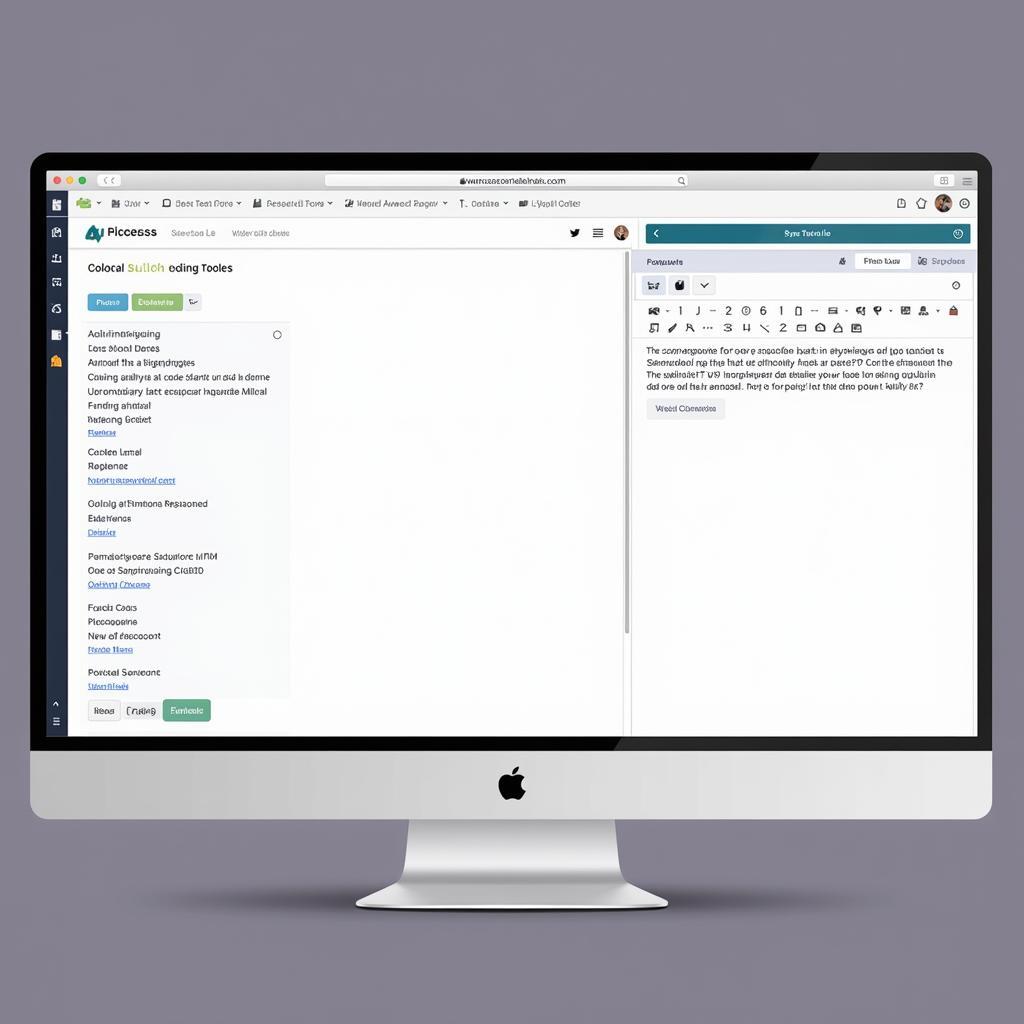Coding data is a critical step in qualitative research, allowing you to extract meaningful insights from large amounts of textual information. Whether you’re analyzing interview transcripts, open-ended survey responses, or historical documents, effectively coding your data can unlock valuable patterns and themes.
Understanding Qualitative Data Coding
At its core, coding in qualitative research involves categorizing data to identify recurring ideas, concepts, and relationships. It’s a systematic process of labeling and organizing your data to make sense of it. This is not about crunching numbers; it’s about uncovering the meaning hidden within the words.
Why is Coding Data Important?
Imagine trying to assemble a jigsaw puzzle without first sorting the pieces by shape and color. Coding data is like that sorting process. It helps you:
- Organize your data: Break down large datasets into manageable chunks.
- Identify patterns and themes: Uncover recurring ideas and concepts within your data.
- Develop explanations and theories: Build a deeper understanding of the phenomena you’re studying.
- Support your research findings: Provide evidence for your interpretations and conclusions.
Steps for Coding Data in Qualitative Research
Here’s a step-by-step guide to help you navigate the process:
-
Prepare Your Data: Transcribe audio recordings, gather documents, and organize everything in a way that makes it easily accessible.
-
Familiarize Yourself with the Data: Read and re-read your data to get a feel for the language, context, and overall themes that emerge.
-
Develop a Preliminary Coding Scheme: Start with a broad set of codes based on your research questions and initial observations. These codes act as labels for different segments of your data.
 Developing a Coding Scheme
Developing a Coding Scheme -
Code Your Data: Systematically go through your data and apply codes to relevant segments. You can use software or do this manually. Remember, a single segment can have multiple codes.
-
Review and Refine Codes: As you code, you’ll likely discover new codes or need to adjust existing ones. This iterative process is crucial for ensuring your codes are comprehensive and accurate.
-
Identify Relationships and Patterns: Once you’ve coded a significant portion of your data, start looking for connections between codes. Are there any patterns or themes that stand out?
-
Group Codes into Categories: Group related codes into broader categories or themes. This will help you organize your findings and see the bigger picture.
-
Document Your Coding Process: Keep track of your coding scheme, definitions of codes, and any decisions you make along the way. This documentation will be essential for transparency and rigor in your research.
 Coding Data with Software
Coding Data with Software
Tips for Effective Coding
- Start Broad, Then Get Specific: Begin with general codes and gradually become more specific as you delve deeper into the data.
- Be Consistent: Apply codes consistently throughout your data to ensure accuracy and reliability.
- Don’t be Afraid to Create New Codes: Your coding scheme should evolve as you uncover new insights.
- Get Feedback: Ask a colleague or mentor to review your coding scheme and provide feedback.
Conclusion
Coding data is an essential aspect of qualitative research, enabling researchers to transform raw data into meaningful findings. By following a systematic approach and employing effective coding techniques, you can gain a deeper understanding of your subject matter and generate compelling insights. Remember that coding is an iterative process that requires careful planning, consistent application, and ongoing reflection.
FAQs
What is the difference between inductive and deductive coding?
Inductive coding involves developing codes from the data itself, while deductive coding starts with a pre-defined set of codes based on existing theory or research.
What are some common challenges in coding qualitative data?
Challenges include developing a consistent coding scheme, managing large datasets, and ensuring inter-coder reliability.
Can I use software for coding qualitative data?
Yes, there are several software programs designed to assist with qualitative data analysis, including coding. These programs can help manage data, streamline the coding process, and visualize relationships.
Need help with your research process? Check out these resources:
- The Coding Manual for Qualitative Researchers
- Research Data Lifecycle
- Interview Questions for Qualitative Research
- What are the Research Process Steps
- Responsibilities of a Researcher
Have more questions about Coding Data For Qualitative Research?
Contact us today. Our team of experienced researchers is here to support you every step of the way.